Why T-34 lost to PzKpfw III, but won against Tigers and Panthers. Part of 3
I must say that the T-34 pre-war production and production of the first war years is often (and absolutely deservedly) reproached for the lack of a commander’s turret providing the commander tank relatively good view of the battlefield. One may ask, why were our tanks not equipped with such turrets?
The fact is that, in the opinion of domestic tank builders, the functions of the commander's pinnacle will be performed by a means of viewing, which, in principle, resembles a submarine periscope. Accordingly, if at the disposal of the German T-3 commander there were five sighting slots in the aforementioned turret, which were usual slots in armor taken in triplexes, then the T-34 commander had a PT-K panoramic instrument, which in some cases was replaced with a PT panoramic sight 4-7) and two periscopic sights, located on the sides of the tower.
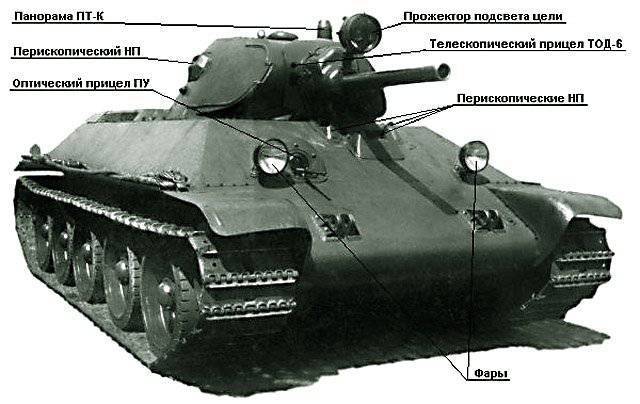
Thus, theoretically, the commander of the T-34 should have had an advantage over his German “colleague”, but in practice it was the Russian tank that turned out to be “blind”, while the German had quite acceptable visibility. Why is that?
Firstly, it is an uncomfortable position and a small sector of the review at the panoramic sight. It was trite, it was difficult to look at it from the commander’s place - it was necessary to turn the head from an unnatural angle, and this deficiency was especially apparent when the tank was moving. Theoretically, PT-K could provide an overview of 360 degrees, but actually did only 120 degrees to the right of the direction of the T-34, while remaining very significant, not viewed, “dead” zone of the tank.
It should also be noted that some disadvantages of the PT-K panoramic device resulted from its merits. So, he had a multiple increase in 2,5, which was very useful in order to identify disguised targets - by the way, the T-3 commander was deprived of this opportunity, which was considered a noticeable disadvantage of the German tank. But on the other hand, a similar increase with a limited angle of visibility required the commander of the T-34 to slowly rotate the handwheel of the drive of the circular observation mechanism, otherwise the image was blurred. And so, as a result of the foregoing, the German tank commander had a good opportunity at any moment, with a twist of his head, to inspect the battlefield and identify threats to his tank, while the T-34 commander had to slowly inspect the limited sector of the space ahead-to his right " iron horse "...
As for the side viewing devices of the towers, which the commander of the T-34 had, he had to bend heavily in order to look at the one that was located on his side. The author of this article could not figure out whether the commander had the opportunity to look into the left viewing device, which was on the side of the loader, but according to the test results for both devices indicated the inconvenience of use, and the small sector of the review, and the inability to clean the windows of the devices while remaining inside tank, and significant dead space ... In general, despite the simplicity of the survey "instruments" of the German T-3 tank, its commander could control the battlefield much better.
The gunner of the German tank besides, actually, a sight, also had 4 reticle, so he could inspect the space next to the tank along with the commander. On the T-34, the commander himself was the gunner, and as such, he had, in addition to the survey tools described above, also the TOD-6 tank telescopic sight.
It must be said that our sights were very sophisticated in design, moreover: the Americans who had studied the T-34 at the Aberdeen Proving Ground even concluded that its scope was “the best in design in the world”, but noted mediocre optics. Strictly speaking, this was the first significant drawback of our sight in comparison with the German one: in principle, they provided the gunner with comparable capabilities, but the manufacturing of the lenses of the German instrument was traditionally characterized by high quality German optics, while we had it somewhat worse before the war, and in its initial period it became at some point completely bad, during the evacuation of the plant that produces it. However, even in the worst of times, it was impossible to talk about the inoperative aim of Soviet tanks.
The second drawback was that the German tank sights were, if I may say so, "crucial." That is, the position of that part of the sight, which the gunner looked at, remained unchanged from the angle of elevation of the gun, but the gunner-commander of the T-34 had to bend down, or vice versa, to rise after the TOD-6 sight.
The driver on the T-34 had as many as three periscopic devices and, in fact, the driver's hatch, which could be opened slightly. The T-3 Makhvod had one periscope and one reticle. But the German instruments provided a very good “front-left” view, while the radio-gunner located next to it, having two reticle at its disposal, had a good front-to-right view, which could tell the driver something. At the same time, our T-34 three “periscopes” were located at different levels (the front, the forward-looking periscope — 69 cm from the seat, the left and the right — 71 cm). Taking into account the fact that the difference in 2 cm in the sitting position required different growths, since the front periscope was at eye level of the mechanical drive, if the latter was short, and the side ones were “below average”, there was no need to talk about any convenience of observation. In addition, there were no armrests on the side devices, they were very quickly contaminated when driving on virgin soil to a state of complete loss of visibility, and regular "wipers" could not cope with their cleaning at all.
The not-too-good visibility of the driver in the T-34 (with the hatch closed) was complemented by the blindness of the gunner-radio operator, who only had an optical sight for the machine gun. In fact, he gave such a meager viewing angle and was so uncomfortable that he practically did not allow to conduct aimed fire from a machine gun in battle. From the memoirs of tank crews it follows that in the overwhelming majority of cases the machine gun served either as “psychological” (shooting in that direction!) Or removable weapons.
Despite all the above, I would like to note the following. Of course, the T-3 and T-4 viewing instruments provided a better overview than the T-34 of the 1940-1942 release, but this does not mean that the German tankers saw everything, and ours saw nothing. Still, you need to understand that the review of the tanks of those years, that the British, that German, that domestic or American was very bad. But the T-34 was worse than the German tanks.
weaponry
Artillery. Here, no doubt, the T-34 leads by a huge margin from both German and any modern medium tanks of other powers. Equipping the latest Soviet medium tank 76,2 mm with L-11 and F-34 systems with an initial projectile velocity for 1940 and 612-655 m / s, which was high enough for 662, respectively, was a huge step forward for global tank building. In essence, it was about the fact that T-34 received a universal artillery system, suitable for fighting almost all possible targets of the tank: enemy armored vehicles, field artillery, anti-tank guns, infantry, as well as a number of field fortifications. At the same time, even in the beginning of the Great Patriotic War, the specialization remained in the artillery defense of German tanks. Thus, the 37-mm and 50-mm guns mounted on the T-3 due to the low weight of the projectile, and, accordingly, the small amount of explosives in it, were not very well suited to destroy enemy infantry and artillery and were mostly anti-tank weapons. Nevertheless, in the fight against tanks with the domestic F-34 could argue except that the best of them, long-barreled 50-mm gun KwK 39 L / 60, armor penetration of which was quite comparable with the Soviet gun. But, having no advantage over F-34 in terms of combat with armored vehicles, KwK 39 L / 60 was inferior to it in terms of impact on other types of targets, and besides, at the time of the invasion of the USSR, exactly 44 German tanks had such a weapon.
On the contrary, the KwK 37 L / 24 artillery system, installed on the T-4, could work well for field reinforcement, infantry and other unarmored targets, but due to the small initial velocity of the projectile, which was only 385 m / sec, it was much inferior and L-11 , and F-34 in the capabilities of defeating enemy armored vehicles. Perhaps the only indisputable advantage of the German tank artillery systems over the domestic L-11 and F-34 was their relatively small size, leaving more room in the tower for other units and crew.
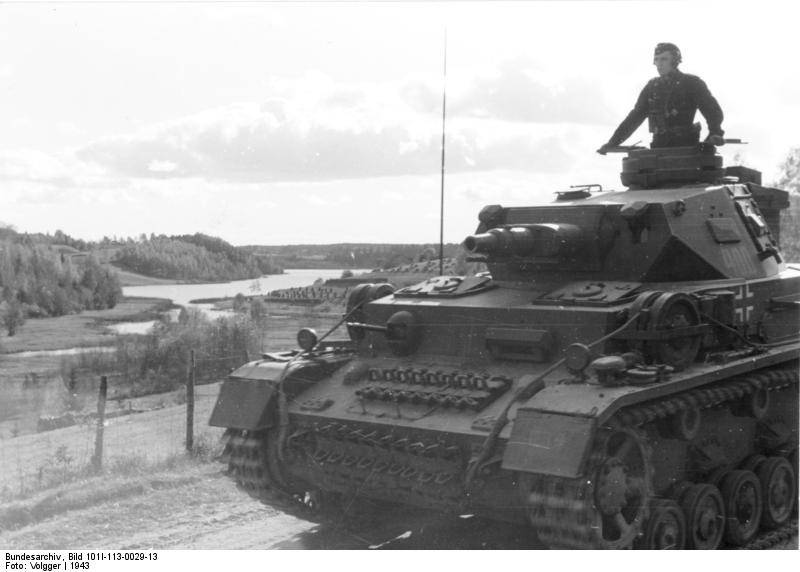
There is nothing to say about other countries - the French 47-mm and the British 40-mm guns F-34 are categorically inferior in all respects. Another thing is the American 3 "Lee", which received the 75-mm artillery system with more or less comparable qualities to domestic 76,2 mm guns, but the Americans managed to shove it into a sponson with a very small angle of horizontal guidance. As for the domestic F-34, the verdict of the Americans who were testing it at the Aberdeen Proving Ground was the following: “... very good. Simple, smooth running and easy to maintain. ” Only a relatively low velocity of the projectile was placed in the minus of our cannon, which for 1942 g was quite explicable.
However, very high for 1940-1941's. The performance characteristics of our 76,2-mm guns were leveled to a certain extent by the meager amount of armor-piercing shells our industry was able to make. Apparently, an important role was played by the fact that for such shells there was no goal for a long time - lightly armored tanks of the middle 30-s could be completely destroyed even by high-explosive 76,2-mm projectile, or shrapnel, exposed to contact action.
Before 1937, we produced an 76,2-mm armor-piercing projectile arr. 1933, and the rate of release was not at all startling: in 1936-37. with the release plan for 80 000 shells, it was possible to produce 29 600 units. Taking into account the fact that not only tank, but also field guns needed armor-piercing shells, even the planned figures look completely insignificant, and the actual output is a completely vanishingly small quantity. Then, with the advent of more durable armor and the development of tanks with anti-missile booking, it turned out that the projectile arr. 1933 was ineffective against the armor sheet 60 mm thick, so I had to urgently develop a new one.
However, the production of armor-piercing shells was completely disrupted. With plans for release in 1938-1940. 450 000 shells, managed to produce 45 100 shells. And only in 1941, a breakthrough was finally outlined - with the plan for 400 000 shells, at the beginning of June, it was possible to make 118 000 shells.
However, in scale battles 1941-1942. and such issues were a drop in the ocean. As a result, even in July 1942 of the Scientific Research Institute-48, studying the impact of domestic shells on German armored vehicles, in the report “Defeat the armor of German tanks” noted:
Not that in the USSR they could not design a normal armor-piercing projectile, the problem was that its mass production required workers of very high qualification, and such were in great deficit. As a result, even those shells that were still manufactured by our industry were far from as good as they could be, but even there were few of them. To some extent, the situation was saved by the decision to produce armor-piercing projectiles that do not contain a fuse and explosives in general. Of course, the armor ’action of such projectiles was insufficient, the enemy tank could be completely disabled only in the event of contact with the engine, fuel tanks or ammunition.
But, on the other hand, it is not necessary to downplay the possibilities of projectiles-pigs. In the last article, we described that T-34 could receive quite serious damage even in cases where the projectile did not pass completely inside the body: damage was caused by fragments of tank armor, knocked out by an armor piercing projectile and the projectile warhead fell into the armored space. In this case, it was about shells caliber 37-45-mm. At the same time, 76,2-mm steel blanks, according to the report of the Scientific Research Institute-48, were punched by German tanks “from any direction” and, obviously, their armor-level action was significantly higher.
Let us also recall that, with the growth of protection of tanks, practically the whole world began to use sub-caliber shells, whose striking element, in essence, was a small-caliber steel bar. Well, our T-34 shot blanks caliber 76,2-mm and, of course, zabronevoy effect "caliber" ammunition was much higher than the sabot 50 and 75-mm German guns.
Another question - when did we have such projectiles? The author of this article, unfortunately, did not find the exact date of entry into service of the “blanks” BR-350BSP, but A. Ulanov and D. Shein in the book “Order in tank forces?” Mention the 1942 year.
As for the machine-gun armament, it was, in general, quite similar in our and German tanks, including the 2 machine gun of a “rifle” caliber 7,62 mm. A detailed comparison of the DT and MG-34 machine guns used in the Soviet T-34 and the German T-3 and T-4, perhaps, is still beyond the scope of this series of articles.
Conclusions on the technical part
So, now let's try to summarize everything told about technical data of T-34. His body armor was definitely superior to any medium tank of the world, but it was not at all "unkillable" - with great success, the T-34 could even be disabled by an 37-mm gun, though for this success his calculation really should have been very, very much . At the time of its appearance and in the initial period of the Great Patriotic War, the T-34 should rightfully be called a tank with anti-missile booking, since it provided quite acceptable security indicators against the main tank and anti-tank guns of the German VET. German tanks in 1941-42's. could "boast" of this level of booking only in the frontal projection. The T-34 protection lost its “counter-missile” status only to the field of adopting 75-mm Kw.k guns. 40, and it appeared on German tanks only in April 1942, and again, it should be understood that it played some serious role even later, as it appeared in the troops in noticeable quantities.
The armament of the T-34 was also superior to its German "competitors", but the position of the Soviet tank crews was complicated by the almost complete absence of full-fledged armor-piercing projectiles. This forced our tanks to converge with the enemy in order to reliably defeat him at a distance where the artillery systems of the German tanks already had chances to inflict significant damage on T-34. In general, if the T-34 were armed with full-fledged armor-piercing shells, we, apparently, would have had "Russian" Tigers "at the beginning of the war, to which German tanks would have at least some effective shooting of their own guns would be deadly. Unfortunately, this did not happen, but for a reason not related to the T-34 design.
Of course, the large crew size, thanks to which the commander did not need to combine the functions of the gunner, better working conditions and visibility gave tankers certain advantages, but how great were they? Perhaps, only tankers who had the opportunity to make war on both Soviet and captured German vehicles could truthfully answer this question. Today, these shortcomings are often exaggerated, and you can find allegations that together they made the T-34 a worthless tank, but there are other points of view. For example, D. Orgill, an English journalist and writer, author of several books on military stories and development of armored vehicles, wrote:
It is difficult to say how right D. Orgill was right, but it should be noted that he wrote during the Cold War, having no reason to flatter the combat equipment of the USSR. The author of this article certainly understands the importance of ergonomics and good visibility in battle, but nevertheless assumes that the Englishman is right in many respects and that these shortcomings of T-34 in terms of review and ergonomics still did not have a decisive influence on the loss of T-X in 1941-1942
Most likely, the key technical flaws were the complexity of the management of T-34 pre-war and early military production and their relatively low technical reliability. This was superimposed by such factors as poor crew training and the not too successful disposition of our mechanized corps (MK), and all this together had a cumulative effect. After all, what actually happened?
The location of the MK in the second and third echelons was theoretically the right decision, since it was from there, after the directions of the German strikes were revealed, that it would be more correct for them to put forward for counterattacks. Placing the MK in the first echelon would allow the Germans to surround them and thereby deprive them of combat mobility and power.
But in practice, this theory led to the fact that our MK had to move forward and travel long distances in order to get in touch with the enemy. The crews of the T-34 for the most part did not have sufficient experience in driving these tanks, they saved on training due to the relatively low lifespan of the tanks. It got to the point that the mechanics of the T-34 were trained in driving on other cars! Of course, this is better than nothing, but with such a “preparation” it was absolutely impossible to master the early T-34 with their weight of nuances in management.
The technical shortcomings of the gearbox and friction clutches required the increased professionalism of the driver, and he, in fact, was downgraded. In addition, not everyone knew and knew how to timely carry out the necessary prevention of components and assemblies, did not know the features of their equipment. All this, obviously, could not but lead to a massive exit of the T-34 from the system for technical reasons even before contact with the enemy. For example, during the famous march of the KNOVO 8, the 40 tanks from the existing 100s were lost, while the 5 tanks were not operational at the time of the war and had to be left at the permanent location.
Of course, the same fact can be seen from the other side - yes, the 8 th MK lost 45% of the existing T-34 fleet, including 40% - on the march, but ... during the transfer of its own power almost 500 km! Reading today's work, it seems that the T-34 in the T-200 mechanized corps simply had to collapse into spare parts after the first 250-8 kilometers of the march, but this did not happen. Maybe it was not so bad for our machines with a resource, as it may seem at first glance ... Or was the commander of the XNUMX-s MK, Lieutenant-General Dmitry Ivanovich Ryabyshev still able to properly prepare the crews of his unit?
But, in any case, in conditions when it was necessary to get to the enemy (and, often, “winding” not one hundred kilometers), and even on equipment that requires well-trained crews, but they are not, then large non-combat losses inevitable by definition. Due to the strategic reasons described by us in the first article of the cycle, the USSR was doomed to lose the Border Battle, and it swallowed up the most efficient troops of the border districts. Accordingly, the strategic initiative remained with the Germans, and they continued quite successfully launched offensive. And this, in turn, means that the decommissioned T-34 remained in the territory captured by the enemy, even in cases where they could well be put into operation. There are cases when it was necessary to destroy even fully combat-ready tanks, which, as a result of marches and battles, did not have any fuel and / or ammunition left.
It is well known that, ceteris paribus, in an armed conflict a party will suffer heavy losses of tanks, forced to retreat and lose its territory. This is also true for the Red Army: for example, in the Moscow defensive operation that lasted for a little over two months, from 30 September to 5 December 1941, we lost a total of 2 785 tanks of all types, or almost 1 400 tanks per month, but for one month of the offensive Moscow operation (5 December 1941 g - 7 January 1942 g) losses amounted to all 429 machines, that is, the average monthly more than three times less than in the defensive (data I. Shmelev). This is due to the fact that tanks lined up on the battlefields, as well as those that failed for technical reasons, remain for those who advance, capturing (winning) the territory. Accordingly, the attacking side has the opportunity to put such tanks into operation, while the retreating party does not. The retreating party can to a certain extent compensate for the forced abandonment of damaged and broken armored vehicles, but for this, its armored units must be superbly trained, and provided with the necessary number of tractors, vehicles, etc. Alas, the tanks of the mechanized corps of the Red Army, in contrast to the above, were very often forced to engage in battle on their own, in isolation, not that from the rear services of the mechanized corps, but even in isolation from their own infantry and artillery.
Thus, we conclude that the technical reasons that markedly affected the loss of T-34 in the initial period of the war were relatively low reliability and exactingness to the qualifications of the driver. And you can even say that due to the above reasons, T-34 pre-war issue and the first military years did not meet the very concept for which they were created. While the main task for these tanks during their design was to see active operations in the operational front-line zone of the enemy, that is, to a depth of 300 km., Technically they were not ready for such operations in 1940-1941 g. Accordingly, they were not ready for the agile tank war that the Wehrmacht imposed on us.
Nevertheless, we have said before, and we will repeat once again - the actual technical problems of the T-34 were neither major nor significant among the reasons for the defeat of the Red Army auto armored troops at the initial stage of the war. Although, of course, they existed and, of course, prevented the war, so in the next article we will look at the history of improving the design of the T-34 - and, at the same time, changing the structure of tank forces and the role of T-34 in battle.
To be continued ...
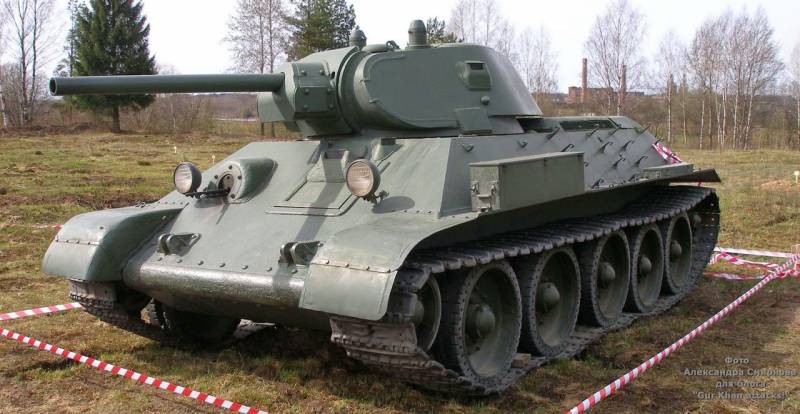
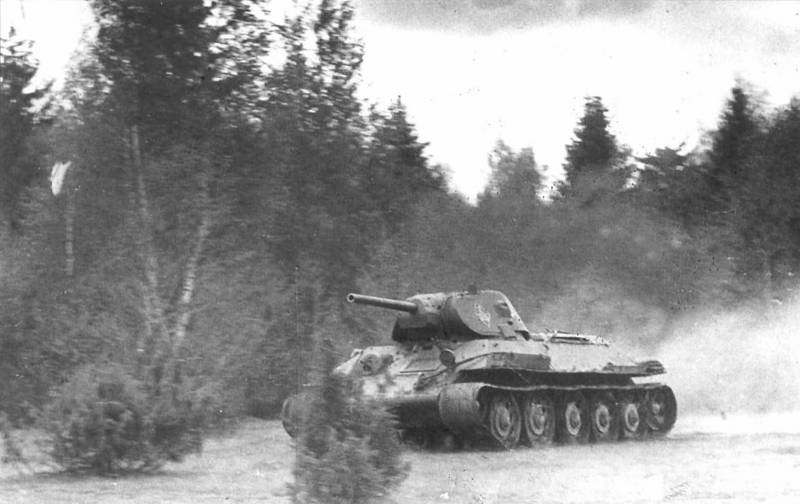
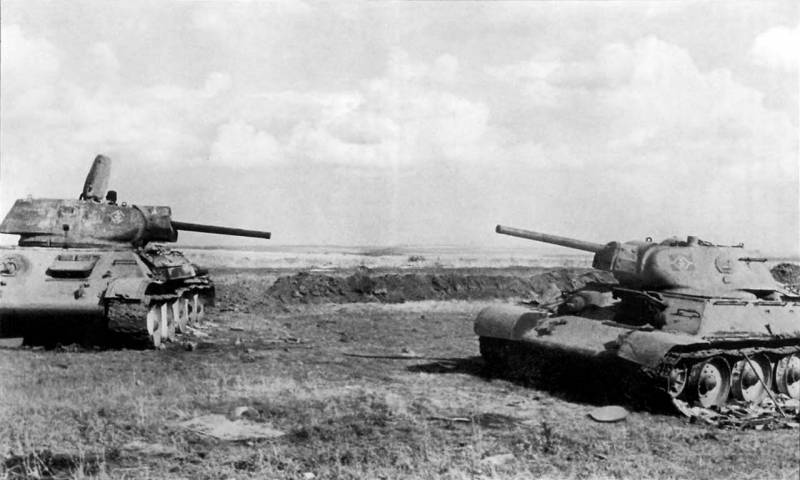
Information